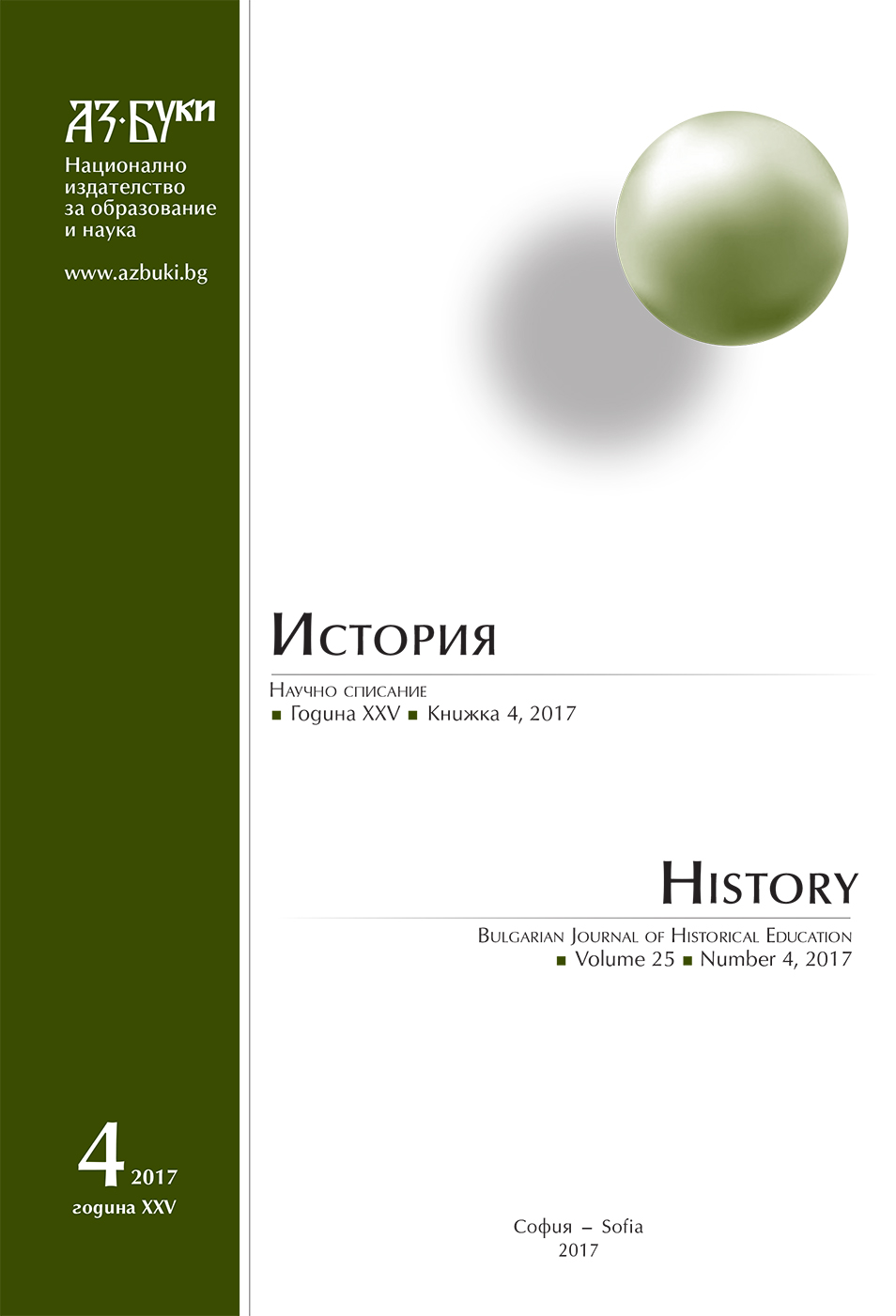
We kindly inform you that, as long as the subject affiliation of our 300.000+ articles is in progress, you might get unsufficient or no results on your third level or second level search. In this case, please broaden your search criteria.

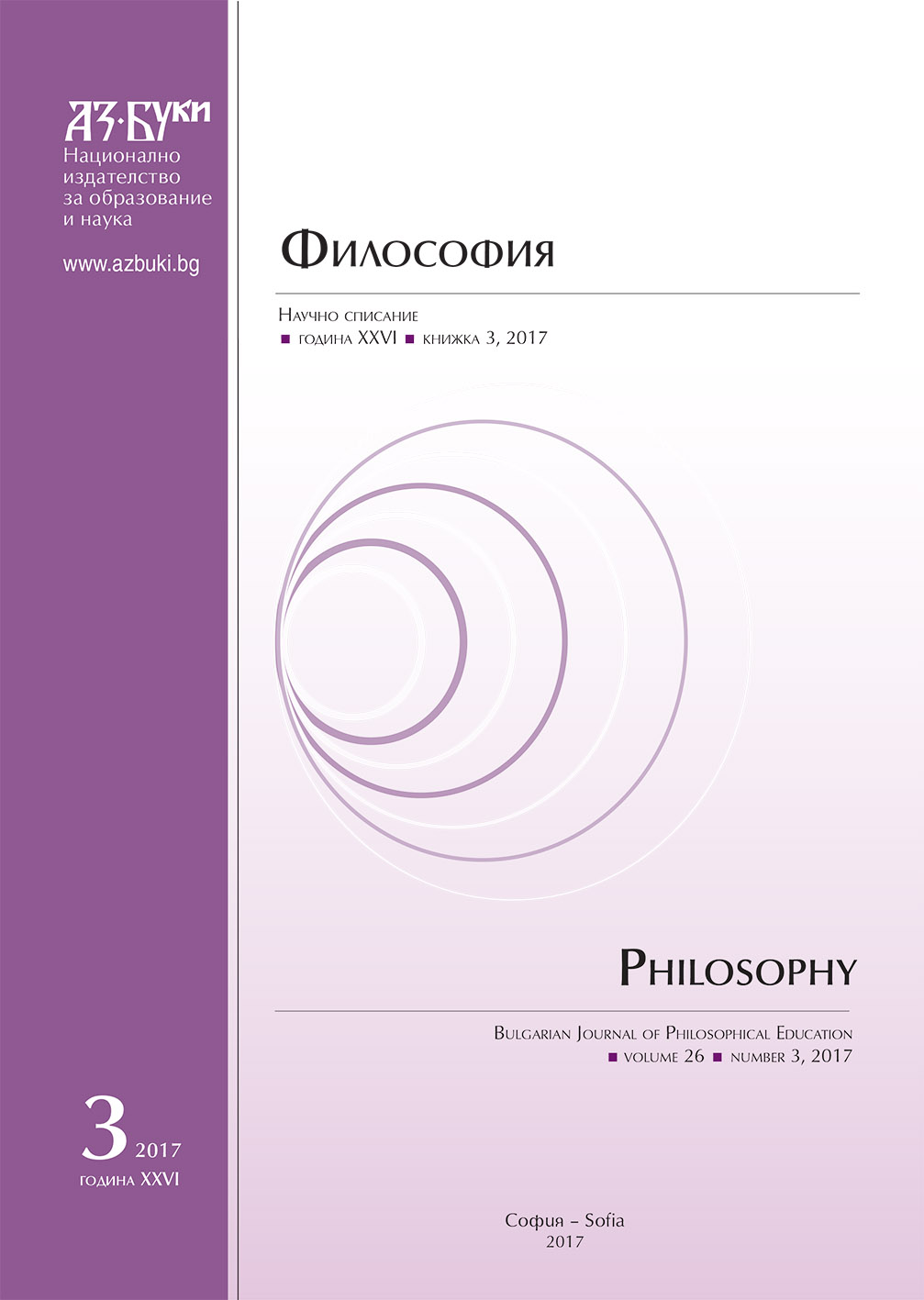
The article presents a sincere and personal view of Bachelard’s philosophy and his place in the philosophical community.
More...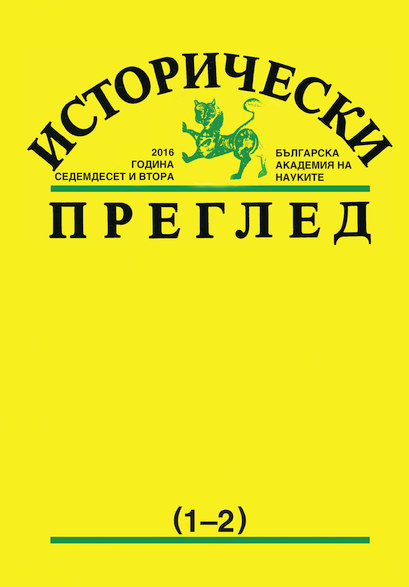
In 1990, The Day of Liberation of Bulgaria from Ottoman Yoke was proclaimed a national holiday, which is honoured on 3 March. On this date (19 February after the old Julian calendar), in 1878, the Peace Treaty of San Stefano was signed, which put an end to the Russian-Turkish War. A quarter of a century already, instead of playing the function of a symbol of national unity, this national holiday turns into an arena of acute confrontation between the political powers in the country, polarized between euroatlantism and russophilia. The retrospective overview of the commemoration of this holiday of the Bulgarian national calendar since 1878, provided by the paper, reveals that it has always been so. During each relatively detached period of Bulgarian historical development, the holiday on 19 February/3 March has always been used as an instrument to split Bulgarian society and State between East and West.
More...
The article is of an overviewing and analytical nature and traces the Chinese classical works published in Bulgaria since 1878 – works written down to the end of the Qing Dynasty (1911), in the sphere of culture, literature, philosophy – as well as publications of Bulgarian authors in the field of classical Chinese culture. The introductory part summarizes the specificity of the Chinese classic published in Bulgaria, taking into account the different forms and genres of Chinese works as well as the translated literature, including translations from third languages. Factors influencing the intensity of its spread are also analyzed. The study attempts to periodicise and classify Chinese classics published in Bulgaria. The materials discussed are arranged in chronological order in several distinct periods: from the beginning of the 20th century until the Second World War; The time of the Second World War; 1950s; From the mid-1960s to the late 1970s; The 1980s and 1990s, after the 2000s until today. Special attention is given to the creation of the Chinese specialty in Bulgaria as well as to Bulgarian authors and researchers related to the Chinese classics – Bora Belivanova, Lencho Dimitrov, Krum Atsev, Sofia Katarova, Evgeniy Karaulanov, Aleksandar Aleksiev, Mariana Malinova, Teodora Koutzarova, etc. In the final part of the study, the number and frequency of the publication of works related to the distribution of Chinese classics in Bulgaria are outlined and the enormous difficulties in finding them are revealed.
More...
Based on unpublished Ottoman tax registers (tapu tahrir defteri) kept at the Ottoman archives in Istanbul, the article examines the process of transformation of the Byzantine town of Adrianople into the Ottoman Edirne; the change in the architectural and ethnical and confessional layout of the city; the location of a part of the Muslim and Christian population and of the urban quarters inhabited by them; the Jewish communities and the dynamics in the quantitative indicators of the registered households; the condition, designation and functions of the ancient and medieval fortress of Adrianople and the way in which it fitted into the new Ottoman urban setting. Having surrendered voluntarily the fortress of Adrianople to the Ottoman, the Christian population was granted the right to continue to reside in its quarters in its interior. In the 16th century massive communities of Christian citizens inhabited the space among the fortress walls of the Byzantine fortress and the majority of their neighborhoods were situated around churches and bore the name of the respective church, while others were named after their current or former priests. Upon the conquest of the city by the Ottoman troops some of the churches in the fortress were turned into mosques for the purpose of demonstrating the dominant position of Islam and meeting the spiritual needs of the Muslim population. After the takeover of Edirne the Muslim population settled outside the walls of the ancient and medieval fortress, where it set up its neighborhoods. Besides Muslims and Christians many Jews continued to live in the city as well. They included romaniotes as well as Jews from the sepharadim and ashkenazim groups.
More...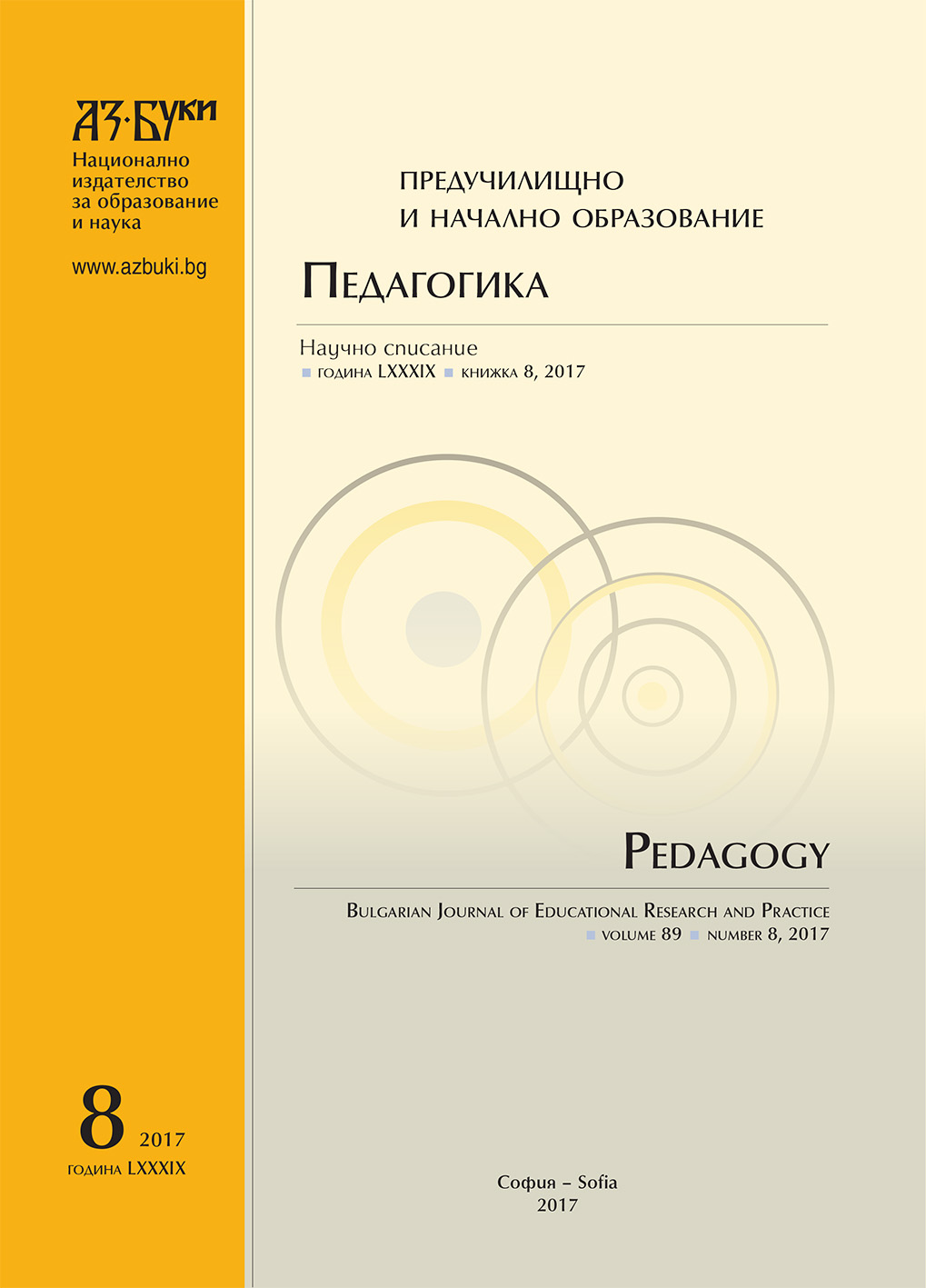
Ziller as a Herbartianer representative is one among the few pedagogues who “has not been treated fairly by historiography”. He has been strongly criticized for historical stage or culture epoch theory in child development, the theory of concentration in studies and the five formal steps of introduction. At the same time his wide innovative work contributes a lot to ascertain the autonomy of pedagogical science in order to occupy its deserved place as a university study which in combination with the pedagogical practice to stand as a fundamental base of teacher’s professional preparation.
More...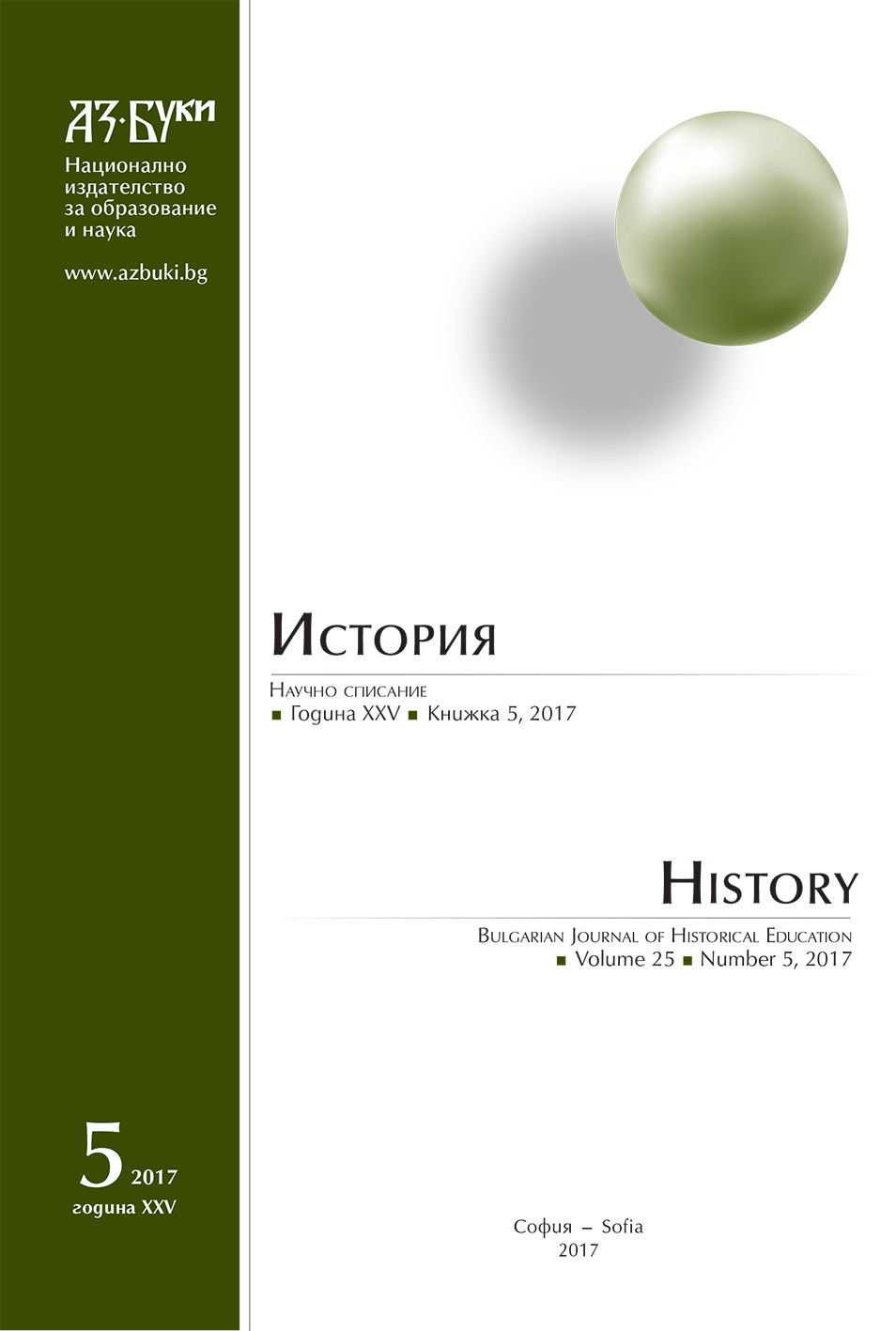
This article is devoted to the structures and frameworks of the professional associations in West Central Bulgaria during the XIX century. The guild-embedded professional life of Bulgarians in the region reveals itself rich in various influences, resulting from migrations, wars, politics, religious life. Each guild owned a complex of traditions, rules, beliefs and cult of a patron saint, particularities, sets of connections and secret slangs, often jealously guarded by its members. The guilds` mutual funds, just like those of the church communities played a key role in the supply of credit to production and trade. The difference is found in the relative amount of supply, which is lesser within the guilds.
More...
Considering that making a comprehensive overview of the role of comics in all former socialist regimes would imply a research adventure per se, i.e. an adventure that largely goes beyond what was written in this text, this piece of work will try in a lapidary fashion to present relationship between the socialist establishment and comics in the former Socialist Federal Republic of Yugoslavia throughout different periods of its existence. In the former Socialist Federal Republic of Yugoslavia, the comics threaded its way through being characterized as disputed mass culture capitalistic media, over to proselyte educational literature, and finally to the media that completely legitimately, in creative and emphatic way, stands shoulder to shoulder with the greatest cultural achievements.
More...
In the article are researched peculiarities of mass celebrations setting in 60-80's of the XX century in Kyiv. There is established that mass celebrations in Kyiv had mainly state and official character of the period. In this regard the setting of celebrations (posters, banners, portraits, stands, musical accompaniment and theatrical performance) subordinated to the ideological content and had propagandistic trend.The article outlines that the Soviet past of Ukraine further largely continues to define our mentality, mode of life, pattern of behavior in society. One of those Soviet "remnants" in Ukrainian society is some mass celebrations. It is states that in general the phenomenon of mass celebrations is an important part of social and cultural realities of our time and used as a communication technology, as a method of consolidation of various communities and way of broadcasting a variety of social ideas.The aim of the article is the study of specific setting of mass celebrations in Kyiv during Soviet period in 60-80 years of the XX century.The most developed in domestic scientific researches is ethno-cultural aspect of holiday phenomenon (V. Borysenko, M. Havryluk, M. Zakovych, S. Zubkov, O. Kurochkin, P. Sokolov, I. Sukhanov). Holiday as a social phenomenon studied Y. Belousov, D. Genkin, K. Zhyhulskyy, A. Mazaev, E. Kaverina, A. Nekrylova, O. Nemyro, A. Piotrowski, V. Propp, S. Turin, D. Uhrynovych, N. Hrenov, O. Shcherbynin, and L. Shumikhina. Specificity of holiday as a symbolic form of culture reveals O. Popravko. In scientific studies of T. Gayevska and J. Slutskaya holidays analyzed as a part of Soviet culture. Some aspects of mass celebrations setting in Eastern Ukraine in the 60's and 80's of the XX century studied O. Penkova.At the beginning the article proved that mass celebrations played an important role in Soviet culture. Besides the entertainment function they had ideological significance. Soviet ideologists V. Lenin, N. Krupska, A. Lunacharsky and others emphasized the importance of consolidation official and national celebrations as a part of cultural state development and ideological activities. Since the early 60's of the XX century began a new stage in the development of mass celebrations, which were caused by profound political changes in the Soviet Union after the 20th Congress of the Communist Party. According to the O. Penkova’s research in this period, "the state returns to human beings at the first time". However, mass celebrations in the USSR kept its state and political character. The state established official holidays and was trying to turn them into public tradition. According to the Decree of the USSR Supreme Soviet "About the holidays and memorable dates" from the 1st of October 1980 to the category of nationwide celebrations were included the anniversary of the October Revolution – on 7–8 November, V. Lenin's Birthday – on 22 April, International Day of Worker's Solidarity (Labour Day) – on 1–2 May, Victory Day of the Soviet people in the Great Patriotic War of 1941–1945 – on 9 May, USSR Constitution Day – on 7 October, National Day of the Union of Soviet Socialist Republics – on 30 December, Day of the Soviet Army and Navy – on 23 February, International Women's Day – on 8 March.Then the article passes to the statement that the state established official holidays and was trying to turn them into public tradition. The special feature of these key holidays was a clear organization that carried out by apparatus structures of the Communist Party. Commissions were engaged in preparation for the holiday, which were created in all steps of the party vertical. The trade unions, The Young Communist League (komsomol), the administrations of enterprises and institutions also carried out decisions of the party apparatus. The basic forms of the mass celebrations were meetings and demonstrations during the 60-80's of the XX century in Kyiv. Together with parades of various kinds (military, sports, etc.) they were the main forms of expression festive aesthetics of the Soviet era. Involvement to the celebration of state holidays began with early childhood. The main form of mass state holidays in Kyiv were demonstrations of workers that took place on the 7th of November and the 1st of May. The celebration of the 1500th anniversary of Kyiv in 1982 became a significant mass celebration in Kyiv in the Soviet period as well.In the conclusions is revealed that setting of mass celebrations is closely associated with ideological content of the Soviet period (the 60-70's of the XX century). In Kyiv such mass celebrations as Victory Day, May Day, Day of the October Revolution and others necessarily were held in the form of meetings and demonstrations. At the time of the events constantly were used state symbols, portraits of leaders and senior communist party leaders, Heroes of the Great Patriotic War and the Socialist Labor. In order to ensure solemnity and emotionality in the setting of mass celebrations were applied large stands depicting the Kyiv emblem or symbols of Kyiv enterprises. Banners with slogans, posters, music of patriotic character, elements of theatrical performances involving athletics and choreographic groups were also widely used.
More...
This article describes the cultural phenomenon of disco polo music from the perspective of poststructural cultural studies. Disco polo isn’t only a genre of popular music, but also a cultural practice which has had a strong impact on sociocultural life in Poland of 1990s. The article explores the influence of popular culture on society: referring to the history of disco polo and characteristics of the political transformation in Poland, the author analyses relations between culture and political system, the economy and social structure.
More...
In this article I describe how “different” and “inclusion” act in texts of popular culture on example of the living dead concept. I claim that the living dead is a political category. There is a story about naked life which is designated to be a biopolitical substantiation. The paradigm for the concept of a living dead is a concentration camp.
More...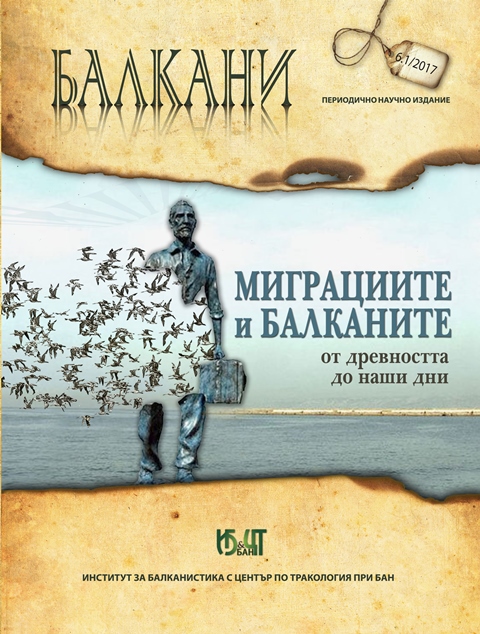
The issue of the freedom of movement and its relation to migrations is among the essential aspects of the theme of migrations. Migration is just a small segment of the total mobility. People move for different reasons and they can be classified in different categories: tourists, immigrants, foreign workers, refugees, students, pilgrims… It is more important that this leads to the formation of a cosmopolitan, racially/ethnically and culturally mixed society against the background of intensive civilisational exchanges. However, these processes are also reflected in acute social conflicts and confrontation.Archaic societies did not elaborate the legal foundations of the freedom of movement, which presuppose an international community of states, based on the general recognition of the principles of territorial sovereignty and equality of independent states before the law. That was to become possible with the emergence of the modern European state system. The problem of the free movement of people and its relevance to migrations as a form of mobility in antiquity has many aspects. The present paper analyses the issue of identity, which is closely related to the issues of otherness and to the big theme of the control over mobility by generating a restrictive system vis-à-vis the alien and the foreigners through a precise model of inclusion in and exclusion from the political and social community.
More...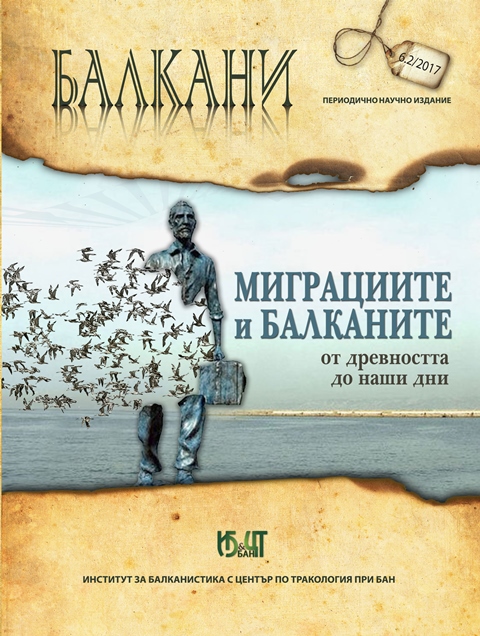
Cultural exchange between Byzantium and the Arabs can be traced in literature, science and arts during periods of peaceful co-existence, constituting evidence of a shared spiritual topos for Byzantines and Arabs. Although the Arab Caliphate repeatedly attacked the Byzantine Empire, often conquering territory, there was also peaceful interaction between the two polities, mainly trade and cultural exchange. This paper sheds light through the folk epic of Digenis Akritas on a syncretic identity forged during the early years of Islam and the Caliphate, their spread across the Arabian Peninsula and around the Mediterranean and the sieges of Constantinople and Thessaloniki (904 CE), in the context of their conflict and contiguousness with Byzantium. Neighbouring the Islamic world is reflected in the tradition of Akrites (populations with special status living in the easterly border areas of Asia Minor), protecting the Byzantine Empire against raids by Muslim Arabs and later Seljuk Turks. The Byzantine epic about the hero Digenis Akritas celebrated in folk ballads (Akritic ballads) is based on historical events. The original long epic, combining Greek, Byzantine, and Asian motifs, originated in the 10th century and was further developed during the 12th century. It was recorded in several versions between the 12th and 17th centuries, the oldest blending popular and literary language.
More...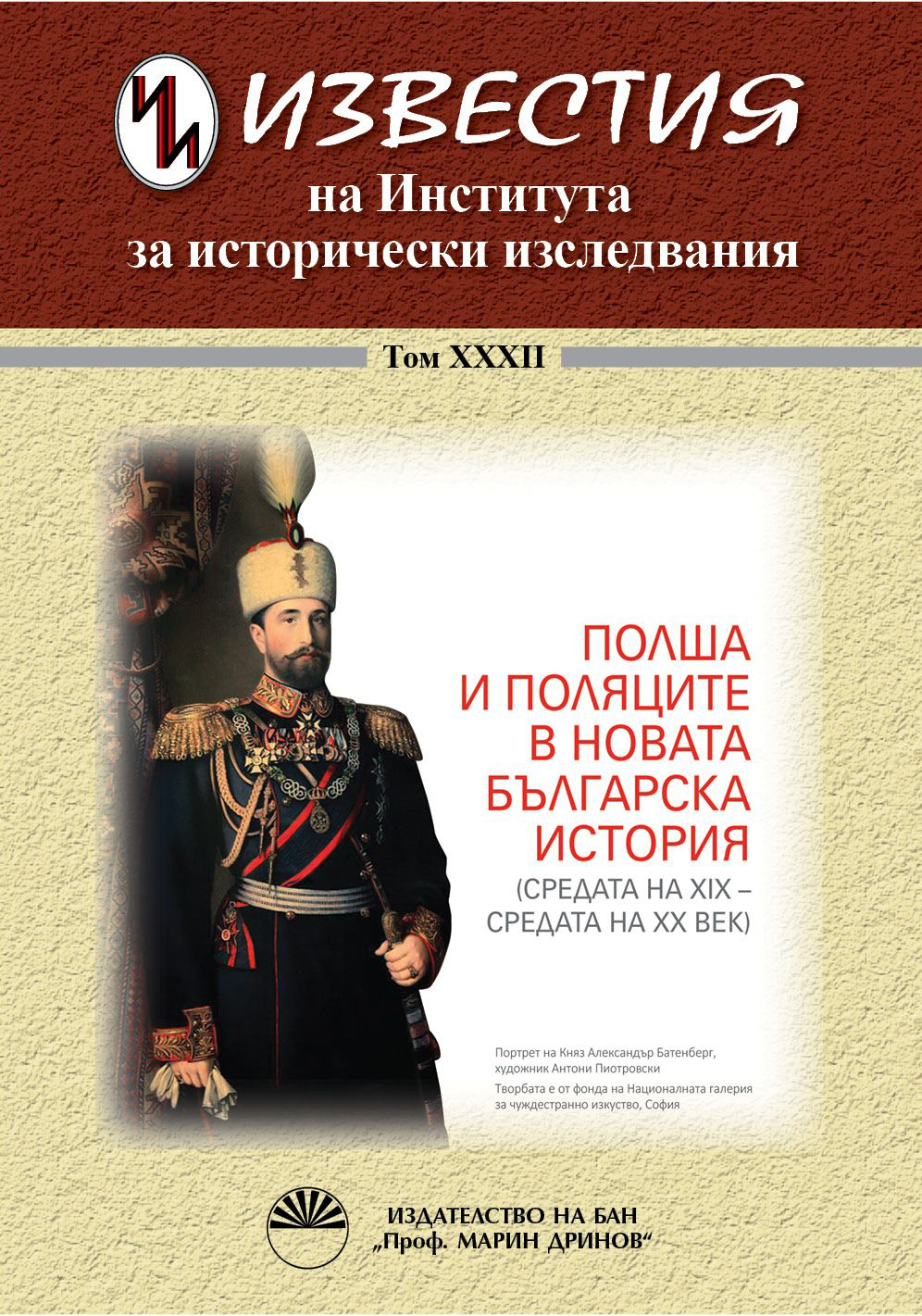
The history of Bulgarian-Polish relations from the late 19th and early 20th centuries is quite naturally a subject of study by the scientific community due to some similarities in the destiny of the two nations, full of dramatic struggle for the assertion of independence and identity. From this period and especially after the mid-nineteenth century, when Bulgarians and Poles went through a period of national revival, emerged also feelings of empathy and mutual liking that are still alive today. We focus our attention on the study of a problem: on the basis of sources from the scientific archive of BAS to see how is presented the history of the Bulgarian-Polish scientific relations during the past hundred years in more or less known documentary evidence. The rich source base of the academic fund offers abundant material about the contacts between the Bulgarian Academy of Sciences and the Polish Academy of Sciences, the election of scientists from both countries for foreign members, for their personal relationships and joint contributions. The paper outlines the key benchmarks that could orient researchers on the topic for a future study of the variegated documentary heritage.
More...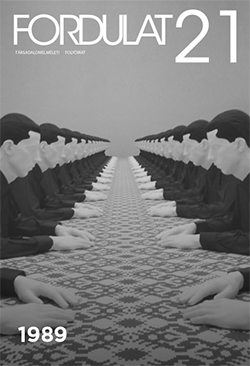
The following paper examines the influence of the Soros Foundation over the internal and external relations of the Hungarian art field form 1984 to 1989. More specifically, it investigates the forms and directions of fine art subsidization and their political and ideological contexts. The activities performed by the Soros Foundation in the second half of the 1980s can be seen as part of a regime change within the artistic scene. In their struggle for cultural hegemony various actors related to the Foundation were able to strengthen their counter-hegemonic artistic practices. Opposing the late socialist artistic hegemony of the Kádár regime, this also was the period when „contemporary” art appeared in Hungary for the first time. As a result, Hungarian art had been put into context with the Western art world: new dependencies were formed, within which Hungarian and Eastern European art found itself in a peripheral position. An important consequence of this was that Eastern European artists became forced to continually demonstrate their Europeanness both internally and externally.
More...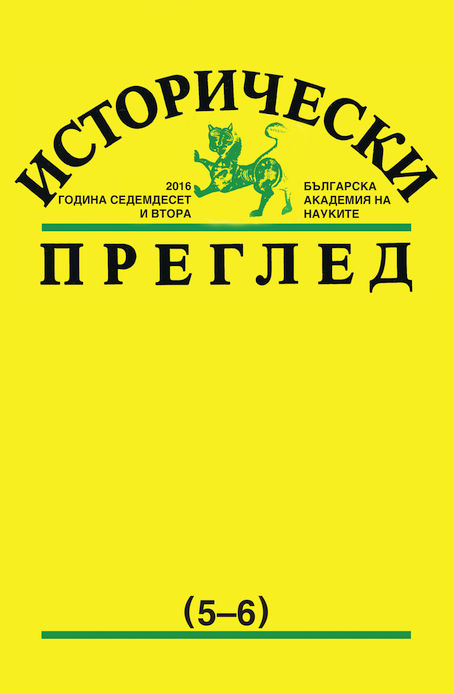
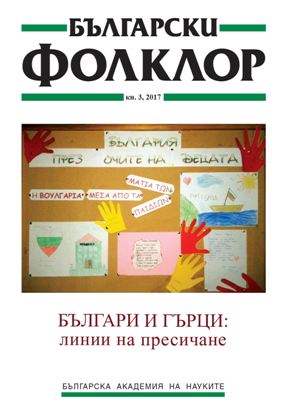
Basing herself on field studies in the villages of Kali Vrissi, Volak and Petrusa in Drama Region in Northern Greece, the author reviews the current state of the masquerade, which now takes place regularly between 6 and 8 of January. Banned after World War II and restored in the 1960s, the masquerade is today a part of the cultural heritage but also a living cultural practice whose elements (rituals, masks and verbal communication) have undergone remarkable changes through the years. Being a cultural construction that points to the past and unifies the heterogeneous population in this border region, every year the masquerade recreates the present and addresses day-to-day issues. Although different in each of the three settlements, the masquerade is a social phenomenon everywhere: from a traditional holiday it grew into an act of diachronic community presentation. At the same time the roles of those taking part in the masquerade are perceived by the local people not as a brief change of identity but as a special status.
More...
The text presents the history of the establishment and development of the Bulgarian Sunday School “Saint George the Zograph” in Thessaloniki (under the patronage of the Bulgarian Athos monastery “Saint George the Zograf”) and examines the curricular and the extra-curricular activities by means of which the Bulgarian cultural heritage is preserved and transmitted. Attention is also paid to the other Bulgarian formal and informal institutions staying in close contact with the school – for example the Consulate General of the Republic of Bulgaria in the city, the group for folk dances and music, as well as the Slavic church choir. Due to the celebration of the feasts and to the activity of the Bulgarian school, the Bulgarian community in Thessaloniki could be considered consolidated, organized and self-reproducing one while the Bulgarian Sunday school functions as a consolidating centre for it (i.e. as an institutional space which unites it and brings its members together upon their common interests as Bulgarian organizations and Bulgarian migrants). The school also functions as a mediator of the Bulgarian cultural heritage because of taking part in the events, organized by the local Greek society with performances including elements of the Bulgarian dance, music, verbal and ritual folklore.In other words, the knowledge about the Bulgarian language, religion, history, folklore and culture is reproduced and transmitted to the next generation (and to the Greek society) through the curricular and extra-curricular activities, as well as through the festive events within the Greek society and within the Bulgarian migrant community. Furthermore, this contributes to the maintenance of the Bulgarian spirit in Thessaloniki and to the preservation of the ethno-cultural identity of the Bulgarian migrants there.
More...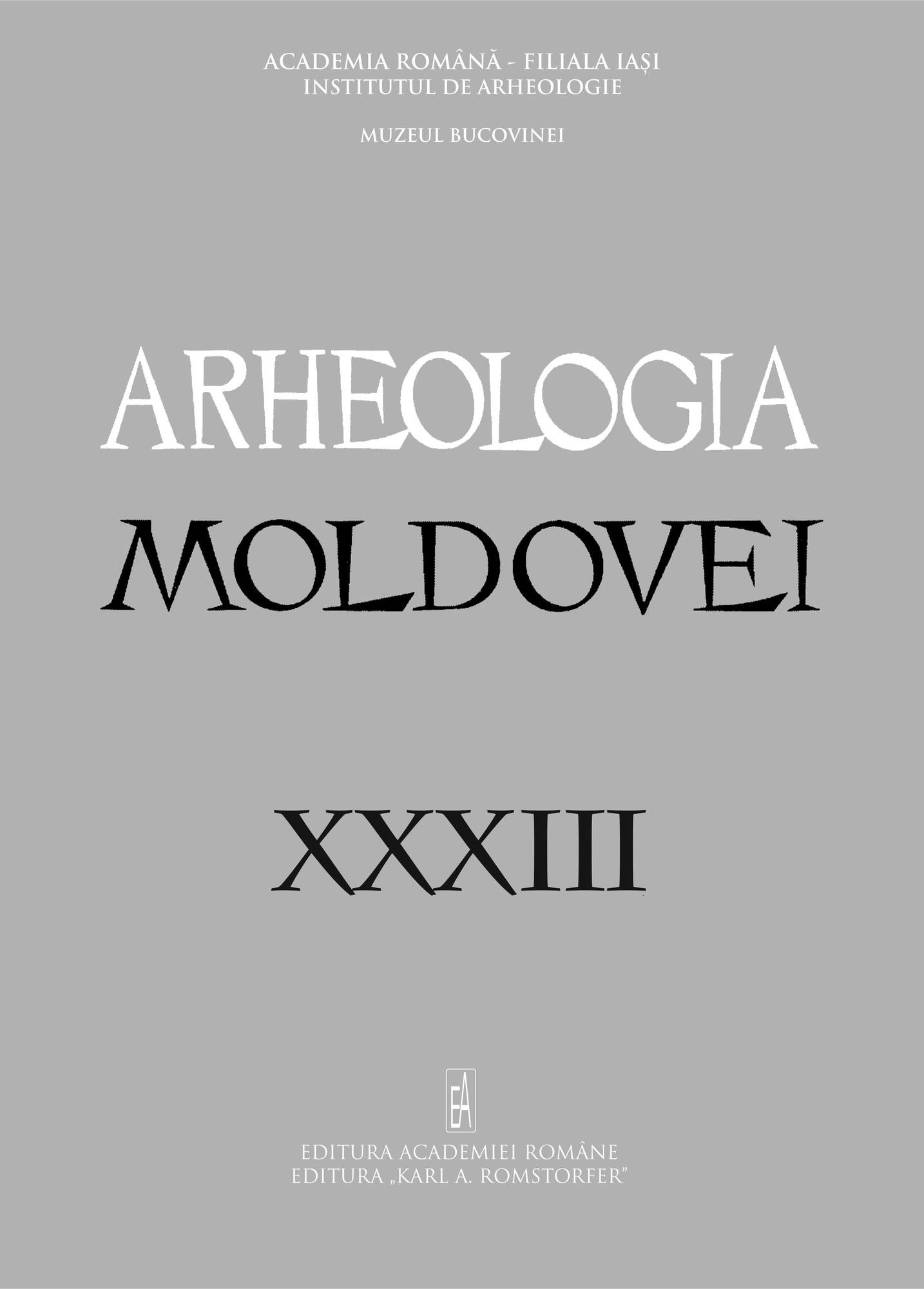
Il y a plus d’un demi-siècle, dans un compte-rendu d’une grande acribie savante, fait pour le premier volume de la seconde édition de l’opus fondamental de Gyula Moravcsik, Byzantinoturcica, I, Die byzantinische Quellen der Geschichte der Türkvölker, Berlin, 1958, inséré dans le périodique Византийский временник, XVI, 1959, p. 271–287, Alexander Kazhdan a inclus le texte original d’un court traité de géographie réalisé par un auteur byzantin anonyme, mais sans y annexer cependant quelque commentaire. Son manuscrit est gardé dans les fonds du Musée d’Histoire de l’Etat, à Moscou (No. 415/509, pages 76–77 verso). Ce traité anonyme reflète les connaissances géographiques accumulées à un moment donné à propos de l’espace terrestre, tout en faisant aussi mention du nom de la Dacie, sous sa forme corrompue Δακεία, à la place de Δακία. Vu quele texte présentait un intérêt plus large et que, à ce que nous sachions, il n’avait pas encore attiré l’attention des spécialistes roumains, nous avons considéré nécessaire de le signaler dans une Addenda, jointe à une étude plus ancienne, réimprimée sur l’initiative des collègues de Bessarabie dans un volume paru aux Editions Cartdidact de Chişinău. A cette occasion-là j’ai formulé quelques considérations sur la description géographique byzantine, tout en précisant que celle-ci reflétait de façon prioritaire la structure de la mappemonde pendant l’Antiquité, l’auteur se permettant des rajouts infimes, avec des données afférentes à une période ultérieure, entre autres mentionnant les Hongrois (Ούγγροι). Peu avant l’apparition du volume de Chişinău, Sergey A. Ivanov a republié le texte de la description géographique dans un prestigieux périodique consacré à la civilisation byzantine de la capitale de la France, l’accompagnant d’une traduction en anglais et de certains commentaires, étude qui, par malheur, nous était inconnue à l’époque où nous avions rédigé l’Addenda à l’article dont on a fait mention. C’est pourquoi nous nous proposons, en l’occurrence – nous servant de l’ouvrage susmentionné –, de présenter la traduction roumaine pour le contenu du traité anonyme et de formuler quelques succinctes considérations en marge de celui-ci. Sergey A. Ivanov a observé que, à la différence de l’Europe Occidentale, où les informations du microtraité sont parfois erronées (par exemple la localisation de certaines provinces de la Gaule en Ibérie) et sommaires (ex.: on ignoredes centres urbains fameux, comme Rome, Venise etc.), les données sur le réseau urbain de l’Asie Mineure sont plus abondantes et plus correctes. Cette remarque concerne autant les villes byzantines, que celles détenues par les Turcs Seldjûqides, ce qui a permis l’hypothèse de l’origine anatolienne de l’auteur de cet ouvrage. D’autre part, il a avancé comme moment d’élaboration pour la description géographique la période comprise entre les années 1366–1390. Personnellement, on considère que ce diapason chronologique est de beaucoup trop restreint, c’est pourquoi il devrait être élargi pour le moins à la seconde moitié du XIVe siècle tout entière. Quant au nom de la Dacie, hormis son utilisation en connexion avec les réalités du monde antique au nord et au sud du Bas Danube, il a été employé au Moyen Age pour désigner la Danie / le Danemark (confusion parfois délibérée,d’autres fois inconsciente), mais aussi pour la nominalisation anachronique de certaines entités d’Etats de l’espace carpato-danubien disparues de la scène géopolitique continentale ou de certains territoires qui avaient acquis d’autres dénominations (Gothia, Gepidia, Avaria, Sclavonia, Patzinakia, Cumania, etc) après le recul de l’administration romaine et après le déferlement des grandes migrations germaniques et slaves. Parallèlement au nom de la Dacie, en différents écrits élaborés par les chroniqueurs et les lettrés byzantins à la fin du premier millénaire et à la première moitié du millénaire suivant on enregistre l’emploi à sens archaïsant de l’ethnonyme Daces, désignant les Serbes, les Hongrois, les Petchénègues, les Roumains etc. Outre les sources narratives, la Dacie du Bas Danube figure en plusieurs cartes datant d’une période proche de la date d’élaboration du minitraité byzantin. Parmi ces sources cartographiques, de notoriété restent notamment les cartes d’Ebstorf et d’Hereford, faites vers le milieu du XIIIe siècle et, respectivement, autour del’année 1300, de même que l’atlas catalan réalisé entre les années 1374–1376 à Mallorca, attribué à Abraham Cresques. La mention de la Dacie en plusieurs catégories de sources à l’époque médiévale, autant à l’Occident, qu’au Byzance, fait preuve que les échos de son rôle sur l’échiquier politique du monde antique s’est perpétué de façon viablele long des siècles.
More...